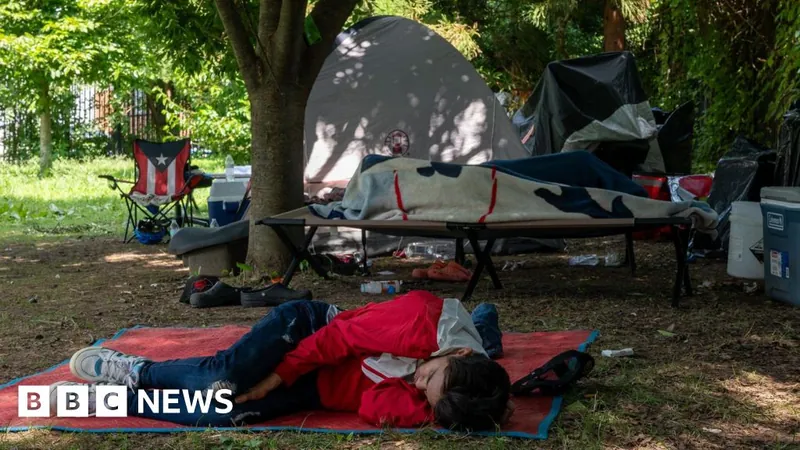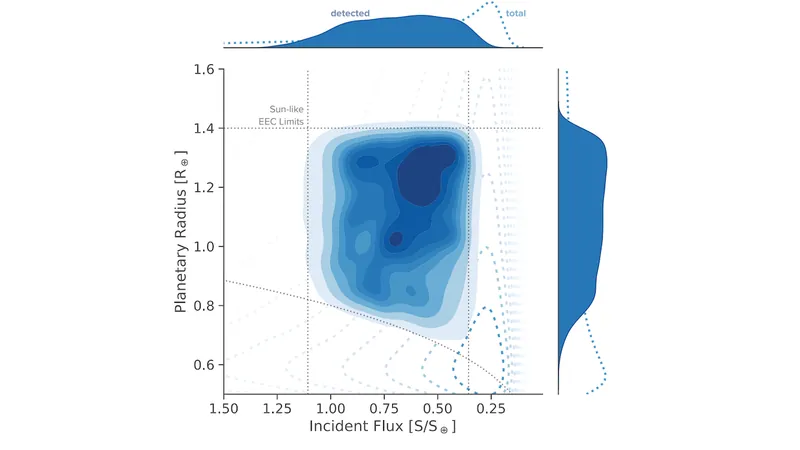
Record High for US Homelessness in 2024: What You Need to Know Now!
2024-12-29
Author: Olivia
The United States is facing an alarming surge in homelessness, with the homeless population skyrocketing by over 18% in just one year. Contributing factors include soaring housing costs, natural disasters, and an unprecedented wave of migration to major cities, according to the latest report from the Department of Housing and Urban Development (HUD).
As of January 2024, the shocking statistic revealed that more than 770,000 individuals were living in shelters, temporary housing, or were entirely unsheltered. This marks a staggering increase following a 12% uptick recorded the previous year, making it the highest number since the federal government began tracking homelessness in 2007.
Experts warn that this figure is likely an underestimation, as it does not account for those temporarily staying with friends or family members, further obscuring the true extent of the crisis.
Family homelessness has been particularly impacted, witnessing a staggering 39% rise compared to last year. In specific areas heavily affected by migration, family homelessness more than doubled, contrasting sharply with the broader trend in over 370 other localities, where the increase remained under 8%.
Children under 18 faced the brunt of this crisis, with nearly 150,000 reported as homeless during the survey. The elderly demographic, particularly those aged 65 and older, also saw a concerning 6% rise in homelessness.
However, amidst this grim reality, some positive trends emerged. Remarkably, homelessness among military veterans decreased by 8%, continuing a long-term decline. Cities like Los Angeles, notorious for extreme housing affordability, reported a 5% drop in homelessness—the first decline in seven years. Similarly, Dallas saw a 16% reduction over two years, while Chester County, Pennsylvania, achieved an impressive 60% drop over five years, thanks to legal support, education programs, and efforts to increase affordable housing specifically targeting migrant workers.
Interestingly, local authorities attributed parts of the spike in homelessness to a significant rise in asylum seekers. Following record numbers of immigrants attempting to enter the U.S., Republican governors from Texas and Florida have transported thousands of migrants to Democrat-run cities like New York, Chicago, and Denver, exacerbating the temporary housing situation.
Fortunately, a recent development has emerged: unlawful crossings at the U.S. border have plummeted by more than 60% since January, leaving officials optimistic as encounters at the border drop to their lowest levels since July 2020. This may contribute to the eventual stabilization of homelessness figures, as several major cities reportedly began closing their migrant shelters.
Another alarming aspect that the report highlights is the impact of natural disasters. Among those counted as homeless were more than 5,200 individuals in emergency shelters in Hawaii, following the catastrophic wildfires that ravaged Maui in August 2023.
This significant rise in homelessness in the U.S. isn’t just a statistic; it's a humanitarian crisis that demands urgent action. As cities grapple with the ramifications of these challenges, the question remains: what steps will be taken to address this escalating issue? Experts and advocates alike urge for comprehensive solutions that target both the immediate and systemic causes of homelessness. Stay tuned for ongoing coverage and in-depth analysis as this crisis continues to unfold!









 Brasil (PT)
Brasil (PT)
 Canada (EN)
Canada (EN)
 Chile (ES)
Chile (ES)
 Česko (CS)
Česko (CS)
 대한민국 (KO)
대한민국 (KO)
 España (ES)
España (ES)
 France (FR)
France (FR)
 Hong Kong (EN)
Hong Kong (EN)
 Italia (IT)
Italia (IT)
 日本 (JA)
日本 (JA)
 Magyarország (HU)
Magyarország (HU)
 Norge (NO)
Norge (NO)
 Polska (PL)
Polska (PL)
 Schweiz (DE)
Schweiz (DE)
 Singapore (EN)
Singapore (EN)
 Sverige (SV)
Sverige (SV)
 Suomi (FI)
Suomi (FI)
 Türkiye (TR)
Türkiye (TR)
 الإمارات العربية المتحدة (AR)
الإمارات العربية المتحدة (AR)